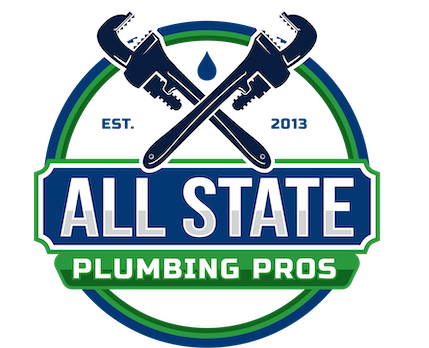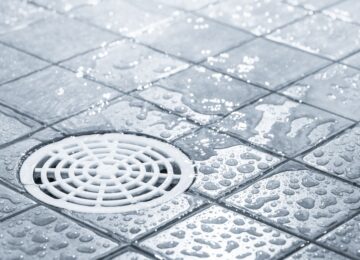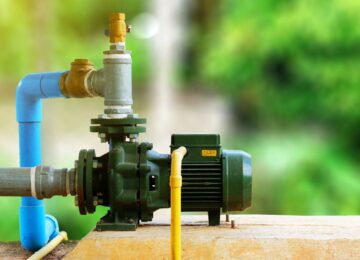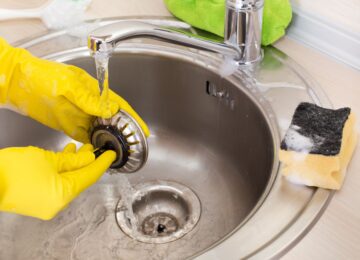Low water pressure in your house can disrupt daily routines, from washing dishes to taking a shower. It’s more than a minor annoyance; it could be a sign of deeper plumbing issues or external supply problems. Understanding the causes and how to respond can help restore proper water flow and prevent further complications. In this guide, we’ll cover the most common reasons your home may be experiencing low water pressure, how to troubleshoot it, and when it’s time to call a professional.
What Causes Low Water Pressure in a House?
Low water pressure in a house is typically caused by clogged pipes, closed shutoff valves, corroded plumbing, or issues with the municipal water supply. Identifying the exact cause requires examining both your internal plumbing system and the external water source.
Low pressure doesn’t always mean a pipe burst or a costly repair. Sometimes, a simple fix like cleaning a faucet aerator or fully opening a shutoff valve can restore your water flow. But in other cases, it may signal a deeper issue, such as mineral buildup in old galvanized steel pipes or a failing pressure regulator.
Here are the most common culprits:
1. Clogged Pipes or Fixtures
Over time, mineral deposits, sediment buildup, and rust can accumulate in your plumbing lines, reducing water flow. This is especially common in homes with hard water and older galvanized steel or brass pipes. You might notice pressure drops in specific fixtures like your kitchen faucet or showerhead.
2. Closed or Partially Closed Shutoff Valves
Your home’s water pressure can drop if the main shutoff valve or water meter valve isn’t fully open. These valves control the flow of incoming water and may have been adjusted during recent repairs or maintenance.
3. Failing Pressure Regulator
A pressure regulator is a valve that controls the water pressure entering your house from the main supply line. If it malfunctions, it can cause a sudden spike or drop in pressure throughout your entire home.
4. Leaky or Burst Pipes
Leaks, even small ones, can cause a noticeable pressure drop. If you have more than one leak or a burst pipe, you may experience low pressure throughout the entire house. Keep an eye out for water stains, soggy drywall, or unexplained puddles.
5. Corroded or Aging Pipes
Older homes often have corroded copper or galvanized steel pipes. As these pipes age, corrosion and scale narrow the pipe’s diameter, restricting water flow and lowering pressure.
6. Issues with the Municipal Water Supply
If your neighbors are also experiencing low water pressure, the problem might lie with the municipal water company. This could be due to maintenance, pipe breaks, or high demand in the area.
7. High Water Usage at Peak Times
Using multiple fixtures simultaneously, like doing laundry while someone showers, can cause temporary low pressure. This isn’t a plumbing issue but a limitation of your current system’s capacity.
8. Faulty Fixtures or Flow Restrictors
Sometimes, the issue is isolated to a specific fixture. Clogged aerators, flow restrictors, or cartridges in faucets and showerheads can reduce water flow.
9. Well System Problems (for Homes with Private Wells)
If your home uses a well, low water pressure might stem from a malfunctioning pressure tank, clogged filters, or a failing pressure switch. In these cases, you’ll want a plumber experienced in well pump service.
10. Pressure Loss from Water Softeners or Filtration Systems
Some water treatment systems reduce flow if they’re clogged or malfunctioning. If your low pressure coincides with recent filter changes or installations, this might be the culprit.
How to Fix Low Water Pressure in Your Home
To fix low water pressure in your home, start by identifying whether the issue is isolated or affects the entire house. Then inspect common problem areas like shutoff valves, aerators, and the pressure regulator. For broader issues, a plumber may need to assess your plumbing system or well pump.
Here are actionable steps to restore your home’s water pressure:
1. Check the Main Shutoff Valve and Water Meter Valve
Ensure both valves are fully open. The main shutoff is typically located where the water line enters your house. The water meter valve is usually found outside where the municipal supply connects.
2. Test Water Pressure with a Gauge
Attach a water pressure test gauge to an outdoor hose spigot. Normal pressure ranges from 40 to 60 PSI. Readings under 40 PSI suggest an issue. If you’re connected to a well system, test the pressure tank as well.
3. Clean Faucet Aerators and Showerheads
Mineral buildup can clog aerators and reduce flow. Unscrew the aerator and soak it in white vinegar to dissolve deposits. For cartridges, check the manufacturer’s instructions.
4. Inspect the Pressure Regulator
If your pressure is consistently too high or low, the pressure regulator might need adjustment or replacement. This task is best handled by a licensed plumber.
5. Look for Leaks
Check for visible leaks in pipes, ceilings, walls, and under sinks. A leaky pipe, even if small, can reduce overall water pressure.
6. Contact Your Water Company
If the issue appears to affect your neighborhood, contact your local water supplier. They may be conducting maintenance or addressing a break in the main line.
7. Call a Licensed Plumber for Inspection
When in doubt, bring in a professional. A licensed plumber can assess your entire plumbing system, test pressure levels, and recommend targeted repairs or upgrades.
When to Call a Plumber for Low Water Pressure
You should call a plumber for low water pressure if basic troubleshooting doesn’t resolve the issue, you suspect a leak, or multiple fixtures are affected. If your home has older pipes, well system components, or pressure regulators, a licensed professional can diagnose and fix the root cause safely.
In Fairfield County and Westchester County, our team at All State Plumbing Pros offers 24/7 emergency plumbing services. Whether it’s a pressure regulator failure or corroded pipes, we’ll get your water flowing again quickly and cleanly.
Conclusion
Experiencing low water pressure can be frustrating, but it’s often a solvable issue once you understand the possible causes. Whether it’s a minor blockage or a symptom of aging plumbing, taking the right steps early on can save time, prevent damage, and ensure your home’s water flow stays strong and consistent.
If you’re dealing with a plumbing emergency or have questions about your system, don’t wait. All State Plumbing Pros is ready to assist with fast, professional service whenever you need it. Contact us today to schedule a visit from one of our licensed experts.
FAQs
How do I fix low water pressure in my home?
To fix low water pressure, first check that your shutoff valves are fully open. Clean faucet aerators and showerheads, and test your water pressure with a gauge. If the issue persists, you may need to replace a faulty pressure regulator or call a plumber to inspect for leaks and pipe corrosion.
What is the most likely cause of low water pressure?
The most common causes are clogged aerators, closed shutoff valves, or mineral buildup in pipes. In older homes, corrosion in galvanized steel or copper pipes often restricts water flow and reduces pressure across fixtures.
What to do if the mains water pressure is low?
If your mains pressure is low, contact your local water supplier to report the issue. They can confirm if it’s related to system maintenance or a water main break. In the meantime, reduce usage and avoid using multiple fixtures at once.
What are the symptoms of low water pressure?
Low water pressure symptoms include slow-filling toilets, trickling faucets, weak showers, and longer washing machine cycles. You may also notice pressure differences between hot and cold water or specific fixtures.

![Low Water Pressure in House: Top Causes & Fixes Low water pressure in your house can disrupt daily routines, from washing dishes to taking a shower. It’s more than a minor annoyance; it could be a sign of deeper plumbing issues or external supply problems. Understanding the causes and how to respond can help restore proper water flow and prevent further complications. In this […]](https://allstateplumbingct.com/wp-content/uploads/2025/07/Low-Water-Pressure-in-House-Top-Causes-Fixes-750x420.jpg)



Leave a Reply